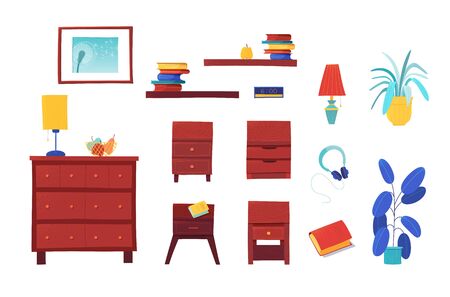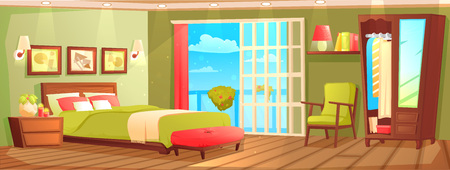Introduction to Multi-Function Furniture in British Flats
Living in a small British flat often means facing a unique set of spatial challenges. Whether it’s a classic Victorian conversion or a compact new-build, the limited square footage and quirky room layouts can make traditional furniture choices impractical. With every inch counting, multi-function furniture has become not just a design trend but a practical necessity for urban dwellers across the UK. These clever pieces serve dual or even triple purposes—think sofa beds, storage ottomans, or wall-mounted desks—which help maximise space without sacrificing comfort or style. Embracing multi-use furniture is particularly appealing for renters and first-time buyers who want to get the most out of their homes without undertaking major renovations. In this article, we’ll explore how DIY multi-function furniture projects can transform tight spaces into flexible, stylish living environments well-suited to the realities of British flat living.
Essential Tools and Materials for DIY Furniture Projects
When embarking on your own DIY multi-function furniture projects, particularly in the context of a small British flat, having the right tools and materials is half the battle won. This section provides a practical guide to essential equipment and cost-effective resources that are not only suitable for compact spaces but also easy to source across the UK.
Must-Have Tools for Small-Space Furniture Making
Even if you’re working within the constraints of a typical British flat, it’s possible to put together a reliable toolkit without breaking the bank or taking up too much storage space. Here’s a breakdown of tools you’ll find indispensable:
| Tool | Purpose | Where to Source Locally |
|---|---|---|
| Cordless Drill/Driver | Drilling holes and driving screws | B&Q, Screwfix, Wickes |
| Compact Jigsaw | Cutting wood or MDF sheets to size | B&Q, Toolstation |
| Tape Measure & Steel Ruler | Accurate measurement for tight spaces | Wilko, Homebase |
| Clamps (G-Clamps or Quick-Release) | Holding pieces steady during assembly | Screwfix, local hardware shops |
| Sanding Block or Electric Sander | Smoothing edges for a neat finish | B&Q, Argos, independent tool stores |
| Spirit Level | Ensuring shelves and surfaces are even | B&Q, Homebase, Toolstation |
| Screwdrivers (Flathead & Phillips) | General assembly and adjustments | Poundland, Wilko, Screwfix |
| Pencil & Marking Gauge | Marking out measurements accurately | Ryman, WHSmith, local stationers |
| Safety Gear (Gloves & Goggles) | Protecting yourself during work | B&Q, Screwfix, Boots pharmacies (for gloves) |
Affordable Materials That Suit Small Flats
The best projects balance durability with affordability—especially important when space is at a premium. Here’s a quick reference guide to budget-friendly materials suited for compact living:
| Material Type | Main Uses in Multi-Function Furniture | Sourcing Tips (UK) |
|---|---|---|
| MDF Sheets (Medium Density Fibreboard) | Shelving, storage units, hidden compartments | B&Q, Wickes—often sold pre-cut for smaller cars/flats |
| Plywood (9–18mm thick) | Cupboards, fold-away desks/tables | Timbmet local branches, Travis Perkins |
| Pine Timber Battens & Dowels | Frameworks, legs for tables/beds | B&Q offcuts bin, local timber yards |
| Screws & Fixings Assortment Box | Assembly and reinforcement | Screwfix multipacks offer good value |
| L-Brackets & Hinges | Creating folding/transformable mechanisms | B&Q hardware aisle or repurposed from old furniture |
| Paints & Varnishes (Low VOC) | Aesthetic finishing and protection in small flats with limited ventilation | Dulux Decorator Centres, Brewers Paints |
Pointers on Local Sourcing Around the UK
- If you’re on a tight budget or want to reduce waste, check out Facebook Marketplace or Gumtree for second-hand tools and surplus materials.
- Community wood recycling schemes such as The Wood Store or Bristol Wood Recycling Project can be treasure troves for affordable timber and offcuts ideal for smaller builds.
- Your nearest Men’s Shed often has shared tools and occasional community workshops where you can learn new techniques hands-on.
A Practical Note on Storage and Workspace Management
Given the limited space in most British flats, opt for stackable toolboxes and foldaway workbenches. Keep your most-used items in a portable caddy so you can easily transform your living area into a workshop when needed—and just as quickly tidy away after your session. With careful planning and these locally available resources, you’ll be well equipped to start building multi-purpose furniture tailored precisely for British small-space living.

3. Space-Saving Storage Solutions
One of the most pressing challenges in a typical British flat is the lack of generous storage space. With clever planning and some DIY effort, you can create multi-function furniture that integrates hidden storage and compact shelving—ideal for those narrow Victorian terraces or modern studio apartments. Here are some easy-to-follow projects tailored to common UK flat layouts:
Under-Bed Storage Drawers
British bedrooms are often compact, so maximising under-bed space is crucial. Construct rolling drawers from sturdy MDF, sized to fit snugly beneath your bed frame. Add handles and low-profile wheels for easy access. Paint or varnish to match your décor for a seamless look.
How-To Tip:
Measure your bed’s clearance before cutting materials. For added organisation, divide each drawer into sections with removable partitions for shoes, jumpers, or seasonal linens.
Floating Wall Shelves with Hidden Compartments
Wall-mounted shelves not only free up floor space but can also double as concealed storage. Build a shelf unit with a hinged bottom or sliding panels—perfect for tucking away keys, post, or even spare change by the front door.
How-To Tip:
Choose brackets rated for your intended weight load and fix them securely to brick or stud walls—a must in many British homes with solid construction.
Multi-Purpose Hallway Benches
The entrance hallway in many British flats is notoriously tight. A simple bench with a lift-up seat or cubbyholes underneath offers a place to sit while putting on shoes and keeps clutter at bay. Use durable timber and soft-close hinges for longevity and quiet operation.
How-To Tip:
Customise the width and depth to fit awkward alcoves commonly found near flat entrances. Add coat hooks above for an all-in-one solution.
Final Thoughts
Tackling these projects will not only help you reclaim precious square footage but also add personal flair to your living space—making even the smallest British flat feel cleverly organised and comfortably bespoke.
4. Convertible and Folding Furniture Ideas
Living in a small British flat often means every square foot counts. The secret weapon? DIY convertible and folding furniture that adapts to your daily needs without compromising on style or comfort. Below, youll find step-by-step plans for practical solutions like fold-away desks and extendable dining tables—using terminology and materials you’ll readily find at your local B&Q or Wickes.
Step-by-Step: DIY Fold-Away Desk
- Planning & Measurements: Measure the available wall space, considering skirting boards and plug sockets. Standard desk width is about 80cm, depth 40cm—a comfortable fit behind most doors or in alcoves.
- Materials & Tools: Purchase a sturdy plywood sheet (18mm thickness recommended), two folding brackets, wall plugs, screws, sandpaper, and paint or wood stain. Essential tools: drill, screwdriver, level, tape measure.
- Cutting & Finishing: Cut your desktop to size. Sand down edges for a smooth finish. Apply paint or stain to match your décor—chalk paint works wonders for a vintage look popular in many UK homes.
- Bracket Fixing: Secure folding brackets to the underside of the desk and then to the wall at your chosen height (typically 74-76cm from the floor).
- Final Touches: Attach a magnetic catch or hook to keep the desk upright when not in use. Consider adding a cable tidy to manage leads neatly.
DIY Fold-Away Desk Quick Reference Table
| Step | Tools Needed | Key Tips |
|---|---|---|
| Measuring Up | Tape measure, pencil | Avoid radiator locations; check for uneven walls common in period flats |
| Cutting & Sanding | Saw, sandpaper | Smooth rounded corners prevent knocks in narrow spaces |
| Fixing Brackets | Drill, level, screwdriver | Use wall plugs suitable for brick or plasterboard as needed |
| Finishing Touches | Paintbrush, cable tidy kit | Match paint with existing skirting boards for cohesion |
How to Build an Extendable Table for Tight Spaces
- Select Your Mechanism: Drop-leaf tables are classic in British kitchens. Alternatively, try telescopic rails if you’re keen on a modern look.
- Sourcing Materials: Solid pine or oak panels are widely available at builders’ merchants. Use flat-pack table legs for simplicity.
- Assembly: Attach the main tabletop securely to legs using corner brackets. Fix drop-leaf hinges on each end and attach matching panels as extensions.
- Additions: Fit a locking mechanism beneath each leaf to ensure stability when extended—spring-loaded bolts work well here.
- Packing Away: When not needed, simply fold down the leaves and tuck extra chairs under—perfect for hosting Sunday roast in even the smallest lounge-diner combos!
Troubleshooting Common Issues (UK Flats)
- Crooked Walls: Use adjustable feet on furniture legs to counteract uneven Victorian floorboards.
- Lack of Storage: Integrate shelves beneath desks/tables using offcuts—brilliant for storing paperwork or cookbooks.
- Damp Corners: Treat timber with moisture-resistant varnish if placing furniture near external walls typical in older London terraces.
The beauty of DIY convertible furniture lies in its adaptability and cost-effectiveness—ideal for first-time buyers or renters across the UK looking to make their flats truly functional without breaking the bank. With careful planning and basic tools, even those new to DIY can craft bespoke pieces tailored perfectly for compact British living spaces.
Maximising Comfort in Compact Living Areas
Living in a small British flat often means that your sitting room serves multiple purposes, from unwinding after work to entertaining friends. While space may be limited, comfort doesn’t have to be compromised. With the right DIY approach, you can create a welcoming and adaptable environment tailored to your needs.
DIY Modular Sofas: Flexibility Meets Cosiness
One of the smartest ways to enhance comfort is by constructing your own modular sofa system. Using basic wooden pallets or sturdy MDF boards as frames, you can build separate units that fit together seamlessly or stand alone as needed. Upholster each module with thick foam and durable, removable covers in classic British hues like deep blue or moss green for a homely feel. This flexibility allows you to easily reconfigure the seating for movie nights, guests, or simply stretching out with a book.
Clever Seating Arrangements for Every Occasion
Think beyond the traditional settee. Consider building window benches with hidden storage underneath — perfect for stashing throws and extra cushions during chilly British evenings. If you’ve got awkward corners, custom L-shaped seating or corner pouffes can make use of every square inch. Stackable stools crafted from reclaimed timber add extra perches for guests without cluttering up the space when not in use.
Cosy Touches with a Personal Twist
Add layers of comfort with hand-sewn cushions in heritage prints or tartan fabrics, bringing a touch of British charm to your DIY creations. Wall-mounted shelves behind sofas double as side tables for mugs of tea or glasses of wine, further reducing the need for bulky furniture. Finally, don’t underestimate the impact of soft lighting — fitting dimmable LED strips under shelving or around seating areas helps foster a snug atmosphere on even the greyest UK day.
With a bit of creativity and hands-on effort, even the smallest flat can become a comfortable haven that reflects your personality and makes the most of every inch available.
6. British Aesthetics: Blending DIY Furniture with Local Style
When crafting multi-function furniture for small British flats, it’s essential to consider how your projects will sit within the distinctive context of UK interior styles. From the timeless charm of Victorian terraces to the clean lines of contemporary city apartments, British homes often blend tradition and modernity in unique ways. Here’s some practical guidance on ensuring your DIY creations complement local décor, while also maximising their functionality.
Finishing Techniques for a Polished Look
Attention to finishing is key. For classic British appeal, opt for muted paint colours—think Farrow & Ball greys, sage greens, or navy blues—which harmonise well with both period features and modern settings. If your flat has original woodwork or mouldings, consider matching stains or using gentle distressing techniques to evoke an authentic lived-in feel. Wax finishes and matte sealants are popular choices in the UK, providing durability without a plastic sheen.
Upcycling with British Character
Upcycling is not only sustainable but aligns perfectly with the British appreciation for characterful interiors. Incorporate reclaimed materials such as old floorboards, vintage hardware, or repurposed cabinet doors from local salvage yards or charity shops. This approach gives your furniture a story and helps it blend effortlessly with other eclectic pieces typical in many British homes. Don’t shy away from mixing eras—a mid-century table leg on a modern storage bench can be strikingly effective.
Harmonising with Classic and Modern Décor
British flats often feature a mix of old and new—think ornate cornicing paired with minimalist furnishings. When designing your DIY pieces, aim for simplicity in structure but allow space for decorative flourishes like turned legs or brass handles. Soft furnishings in heritage prints (e.g., tartan cushions or William Morris-style fabrics) add another layer of local flair. If you’re working with a very modern flat, sleek lines and integrated storage work well; just introduce warmth through traditional textures like wool throws or linen seat pads.
Practical Tips
- Test paint swatches in your space under natural light before committing
- Visit local antique markets for hardware inspiration
- Balance bold upcycled elements with neutral surroundings to avoid visual clutter
Final Thought
The joy of DIY in Britain lies in personal expression balanced by respect for context. By focusing on thoughtful finishes and locally inspired details, you’ll ensure your multi-function furniture looks right at home—whether nestled beneath a Georgian sash window or brightening up a compact new-build studio.
7. Maintenance, Safety, and Sustainability Tips
Proper Care for Longevity
Once your DIY multi-function furniture is assembled and installed in your flat, routine maintenance is key to ensuring it stands the test of time. For wooden pieces, dust regularly with a microfibre cloth and occasionally treat surfaces with natural beeswax polish or linseed oil, both commonly found in UK hardware shops. For metal elements, use a damp cloth and dry thoroughly to prevent rust, especially in humid British weather. Check fixings and hinges every few months to ensure they remain secure, particularly if you move the furniture around often in a compact space.
Safe Construction Practices
Safety should never be overlooked during DIY projects. Always use appropriate personal protective equipment (PPE) such as safety goggles and gloves when sawing or sanding materials. If using power tools, double-check that leads are not frayed and sockets are safe—UK regulations require all plugs to be fused for added protection. Secure heavy items to the wall using proper wall plugs suitable for brick or plasterboard, which are common in British flats. Remember, measure twice, cut once: precise planning reduces waste and mishaps.
Sustainable Material Choices
Making eco-friendly choices isn’t just good for the planet—it’s also increasingly accessible in the UK. Opt for FSC-certified timber from local builders’ merchants or reclaimed wood from architectural salvage yards, which gives materials a second life and adds character. Upcycle old furniture found on sites like Gumtree or Freecycle instead of buying new. When painting or finishing, select low-VOC paints and finishes available at most UK DIY stores; these products emit fewer harmful chemicals indoors.
Disposal and Recycling
If you ever need to replace or dispose of your creations, break down pieces into recyclable components wherever possible. Many local authorities offer wood recycling points and bulky item collections.
Community Resources
The UK has a strong culture of sharing knowledge—join local repair cafes or maker spaces for advice on repairs or upgrades. Not only does this extend the life of your furniture, but it also connects you with others who share your passion for creative, sustainable living in small spaces.


